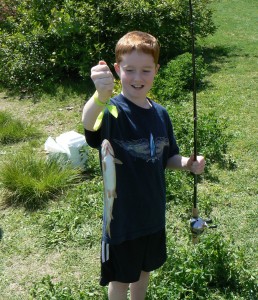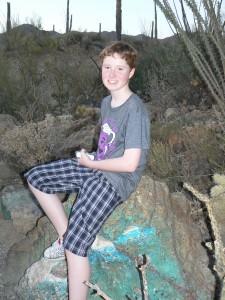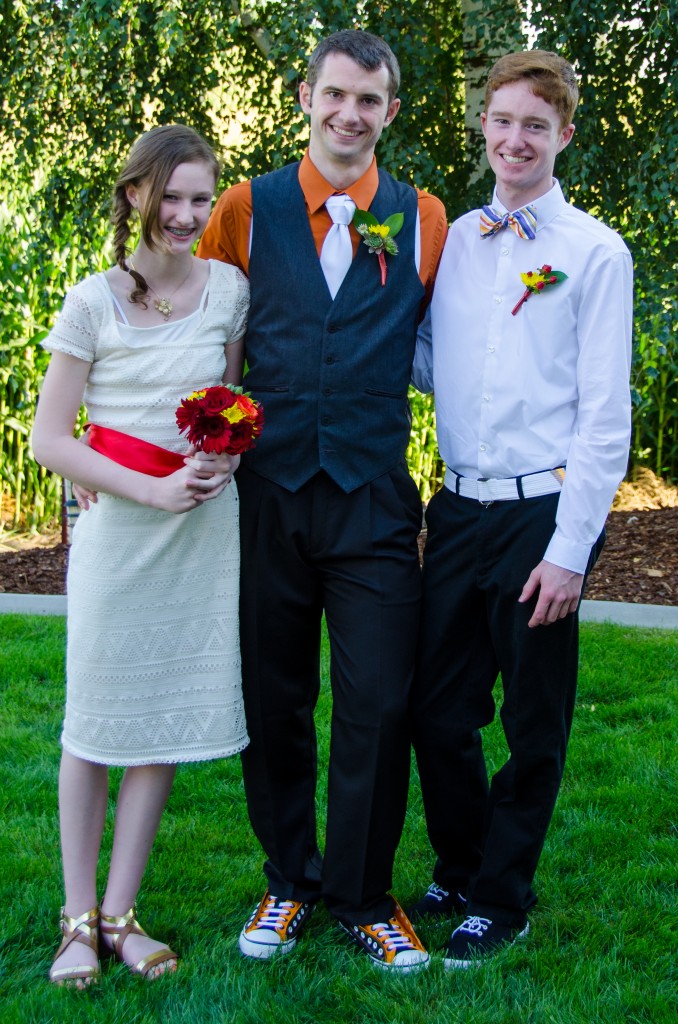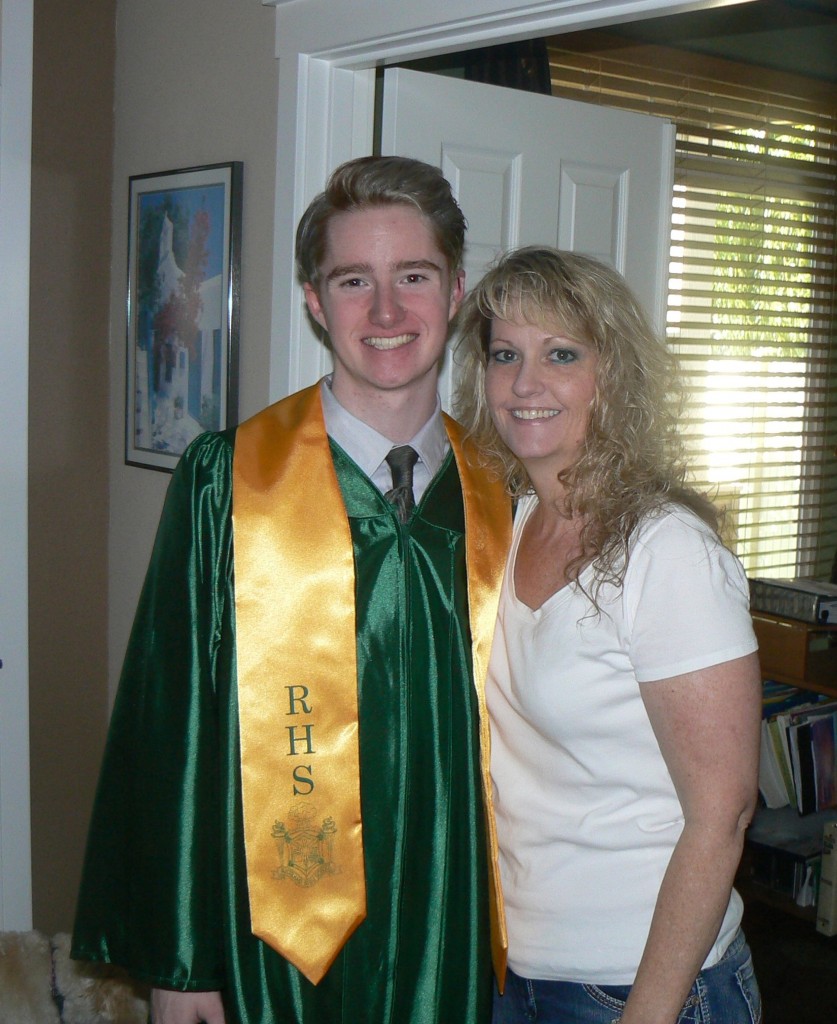
Periodic fever syndromes are often an invisible illness. This picture of Keegan fishing in May 2007 was while he was in an episode, high fever and muscle aches, but he did not want to miss this fishing event with his friend. It was hard for us as we were in the beginning stages of trying to find out what was wrong with him and had no idea what we were dealing with.
The following was written by Darcy Coyne, mom to Keegan who has a periodic fever syndrome. Scroll to the bottom to see an update to Keegan’s search for a diagnosis!
My son, Keegan, who is 18 years old, has been suffering from an undiagnosed periodic fever syndrome since he was 9 years old. His symptoms started in June of 2006 with 2 weeks of an unexplained high fever, then once a month for about 6 months he would have a high fever lasting for about a week. After the first 6 months, his fevers started coming almost daily, usually at least 103º F, that were accompanied by severe muscle aches which caused him to miss a lot of school as neither acetaminophen nor ibuprofen were enough to help lower the fever or to relieve the muscle aches.
After 6 months, the first specialist appointment
Keegan’s first visit to our children’s hospital was in January of 2007 and was with a rheumatologist. They told us, after extensive testing, that his blood work was very abnormal, with high inflammation markers, but that he wasn’t presenting with any known rheumatological issues, therefore they didn’t know what to do for us, or where to send us!

Keegan on a vacation to Tucson, AZ in June of 2012, high heat and no humidity, but it didn’t set off an episode. Whew!
Next came a long list of misdiagnoses
We bounced around to a lot of the other medical specialties for the next 3 years before finally getting into the Undiagnosed Diseases Program, at National Institutes of Health (NIH) in Bethesda, Maryland in January of 2010. After a week of Keegan being tested by every medical specialty the NIH doctors could think of, plus a muscle biopsy, a few MRIs and an ultrasound, they also told us that they did not know what to do for him and did not give us any ideas on where to take him. When we returned home we went to our local rheumatologist that Keegan had seen previously and immediately, after knowing NIH had not diagnosed him, diagnosed him with junior rheumatoid arthritis (JRA). I disagreed with that diagnosis as we had been looking for a diagnosis at that point for over 3 years and not one doctor had diagnosed him with JRA and the NIH had just done a full work up on him and they had not diagnosed him with JRA.
We then went to the rheumatologist at Children’s–again. We had been there previously with no diagnosis, and immediately, after hearing that the NIH could not diagnose Keegan, they said that he had a granuloma. I disagreed with this doctor too. Why all of a sudden, after being at the NIH, and when the NIH couldn’t figure out a diagnosis, were we now getting diagnoses from doctors that had previously told us they had no clue what was wrong and no new testing had been performed?
There was never any doubt that Keegan had something, but the doctors just couldn’t figure it out.
A young life now in limbo
We went into a sort of limbo after that, meaning that we stopped trying to figure out what was wrong with him as fiercely as we had. Of course, we still knew something was very wrong, but the doctors were not helping us, and we had no idea what to do or where to turn. We still continued to see the local rheumatologist, that did put Keegan on Sulfasalazine which did absolutely nothing to help control the symptoms. During that period, Keegan had dental braces put on. We never even thought that the braces might cause inflammation because of the teeth being moved around, but unfortunately Keegan went through one of his worst periods. His fever episodes were pretty much every day, usually over 102ºF, and his muscle pain was so extreme that he spent most days upstairs in either his bedroom or the family room, as going up or down stairs was just too much. He missed 97 days of school that year during the 7th grade, and when he was at school, he only went to 3 classes a day.

Keegan with his brother, Keefe, and sister, Kinzie, at Keefe’s wedding. Here he had been on Kineret for over a year and was much healthier.
Finally a turning point
Finally, I got out of the “what do I do?” slump and contacted our doctor at NIH. We had not returned to the NIH since the first visit 3 years earlier, but I had kept in touch with this doctor via email. I begged her to bring us back–we needed help–Keegan had already lost most of his childhood to fever and pain and we needed to figure something out! She agreed to bring him back to the NIH, but the emphasized that a diagnosis was probably not going to happen, and that he would probably be put on a daily injection, Kineret (anakinra). I asked Keegan if he would be able to give himself a shot to try to help to relieve his symptoms, (this boy had to be held down for the first few years of having his blood drawn) and his reply was an emphatic, “Yes!”
A treatment that worked in just 90 minutes
So, in May of 2013 we flew 5 hours across country to go to the NIH for the second time. Flying actually put him into an episode of notable symptoms, which was good, as the doctors needed to see him in a full flare. In the appointment, Keegan was immediately shown how to give himself the injection, and he got his first dose of anakinra. Within an hour and a half after his first injection, we saw this 15 year old boy go from walking into the appointment like an old man, limping and walking very slowly from pain, to being able to walk up and down stairs pain-free; it was amazing to watch!

Keegan, shown here the day of his high school graduation, may not yet have a diagnosis, but he does finally have treatment that lets him live life to the fullest. By graduation, he had been on Kineret for over 2 years and able to hold down a job for over 2 years. He went through graduation, not only with good grades, but also without having a fever or muscle aches, which would have made it difficult to walk and participate.
Today Keegan is active and healthy and his genes may someday help others with a diagnosis and treatment
Keegan has been on Kineret for 2 years now and it has changed his life, and ours, immensely. We have had a few hiccups along the way, but if he takes is injection daily he does well; if he misses a day or two his symptoms come back fast and even harder than they did before. We still don’t have a diagnosis or a name for his disease, but he his in a genome study at the NIH now. Hopefully, having his DNA in the study will help the researchers to find the cause of a new periodic fever syndrome that will help him, and others in the future.
March 2017 Update!
We were just told that my son, who is now 19, has one mutation on the gene LPIN2. The researcher told us that they have always known having two mutations on LPIN2 is significant (Two mutations causes Majeed syndrome.), but they didn’t know if only having one mutation was a problem. More research is needed to learn if one LPIN2 mutation is significant.
The Autoinflammatory Alliance is a nonprofit organization dedicated to helping those with autoinflammatory diseases.
Donate now to help with awareness, education, and research for these rare diseases.



